The Land Of China -- Explore by Province
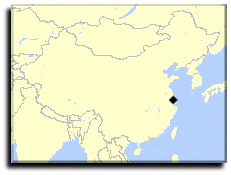 |
 |
Shanghai
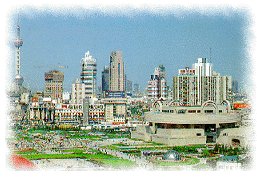
|
Shanghai is one of the four municipalities under the direct jurisdiction of the central government lying at the center of China's eastern coastal line. Shanghai is Chinas largest city and also one of China's hubs of land, water, and air communication.

Pearl |
With the advantages of good location and convenient communications, Shanghai抯 economy had once prospered and the city flourished. Since the beginning of the 1990's, Shanghai has assumed the position of pace-setter among all Chinese cities in implementing the policy of reform and opening to the outside world. And as part of the modernization drive, it has been at the forefront of new construction. No matter what sector it is engaged in (economic, financial or trading), Shanghai has displayed boundless vitality in re-molding itself into an international metropolis.

|
the Bund
The Bund, which extends from Jinling Road in the south to the Waibaidu Bridge over the Suzhou Creek in the north, is on the western bank of the Huangpu River.
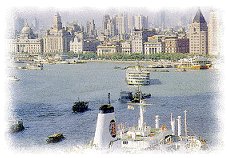
|
Today, it has become the favored place for tourists to tarry and enjoy the river scene and cultural activities going on along the Bund. Walking up to the dam, you will be fascinated by the sight of forest of masts, the glittering waves, the impressive skyline, and the shadowy trees interlacing with beautiful flowers. It is just like a magnificent scroll. The Bund - a miniature museum of international architecture with dozens of high buildings standing along the shore, overlooking the shuttling sailing vessels on the Huangpu River amid the whistle blasts here and there.

|
The Nanjing Road is 5 kilometers long with its east end at the Huangpu River and its west end connecting Yanan Toad. With a history of over 150 years, it is the busiest street for shopping. On both sides of the street are hundreds of department stores, supermarkets, and various shops. Nanjing Road is a well-known paradise for shopping. In the past few years a number of high-rise buildings have been put up along the street, and in the future Nanjing Road will be flanked by more than 10 tall buildings of 30 stories.

|
The Nanpu Bridge, located at the South Dock - the narrowest part of the lower reaches of the Huangpu River, was constructed in 1991. The main arch of the bridge has a span of 423 meters and a height of 46 meters. The total length of the bridge is 846 meters, and the bridge tower is 150 meters tall. Nanpu bridge is the first bridge on the Huangpu River. Tourists can take the elevator to get to the sidewalk of the bridge and overlook the scenery on both banks of the Huangpu River.
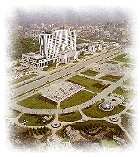
|
The People's Plaza, in the center of the city of Shanghai, is a square where no tourist forgets to visit. Dotted with flower beds where flowers of various kinds and of all seasons, the plaza is brimming with vigor and vitality. Swift dancers follow the rhythmical beat of the music fountain in front of the City Hall; children express their love for animals by feeding hopping pigeons with corn; families of three stroll along the winding lanes enjoying familial harmony and love; and the Shanghai Museum, surrounded by greenery, attracts thousands of history-lovers daily.
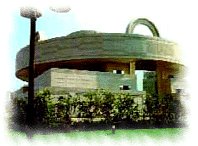
|
The world-renowned Shanghai Museum, a museum of ancient Chinese art, was established in December, 1952 at the West Nanjing Road which was once the club of the Shanghai horse race course. In 1959, it moved to 16 Henan South Road. The new building was constructed in 1995 in the south part of the Peoples' Plaza. The new building is shaped like an ancient Chinese bronze jar, representing the Chinese concept of a Round Heaven and Square Earth. It is a new modern landmark in Shanghai.
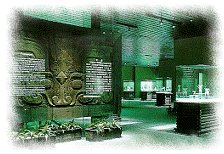
|

|
Located in the southern section of Shanghai on Yuyuan Road, Yu Yuan is one of the most famous ancient gardens south of the lower reaches of the Yangtze River. Yu Yuan means "Garden of Lesurely Repose" and was formerly a private garden built in 1559 (the 21st year Wan Li's reign of the Ming Dynasty). Inside the garden there are exquisite rockeries, dragon walls, and differently shaped pavilions and towers as well as other tourist attractions.

|
Longhua Temple
Longhua Temple at 2853 Longhua Road is an ancient monastery south of Yangtze River. The temple is the biggest and oldest temple in Shanghai, and according to legend, it was built during the Three Kingdoms Period (242 A.D.).

|
Longhua Temple's main hall and six other halls are stately and splendidly structured. The chiming of the "Longhua Evening Bell" in the monastery is one of Shanghai's eight main tourist attractions. The Longhua Pagoda standing opposite the monastery is equally an imposing and splendid structure with seven stories, an octagonal shape, upturned eaves, and hanging bells on the eaves' corners. This elegant and exquisite pagoda is the relic of the Song Dynasty.

|
With a history of over 100 years, the Jade Buddha Temple is one of the well-known Buddhist temples in Shanghai. The temple was built in 1882, covering an area of 8,000 square meters. The temple is famous for its jade Buddha statues which are pure white and elegant. Yu Fo got its name because of two statues of Sakyamuni brought from Burma - one in standing position and one in sitting position. The seated Buddha statue is as high as 1.9 meters, carved from a complete white jade piece. It is said to weigh 1,000 kilograms, ornamented with jewels. It is an art treasure. The temple also houses large numbers of ancient carvings, paintings, and precious Buddhist cultural relics. The construction of the pavilions and halls is in the traditional style of the Song dynasty. It has four halls: the Hall of the Heavenly Kings, Grand Hall, Reclining Buddha Hall, and the Jade Buddha Chamber.

|
Located in Songjiang County on the Zhongshan Road of Chenxiang, the Songjiang Mosque, also called the White Crane in the Cloud Mosque, was built between the years of 1341 and 1367 during the reign of Zhizheng of the Yuan Dynasty (1341 - 1368). It is the oldest Muslin building in Shanghai (and one of the oldest in China) and consists of halls, towers, and bathrooms. The mosque expresses two architectural styles: the Arabic and the traditional Chinese, while the latter covers features of Qing and the Ming dynasty. The building is of brick structure with arched roof decorated with colored designs made up of Arabic scriptures.

|
The Grand Mansions is a collection of architectural beauties. These big mansions of grandeur and splendour have made a record in the history of building up family fame and fortunes, but now the colours of their walls have been fading, which indicates thr vicissitudes in life through several generations. One thing that offers consolation to the visitors is that they can still feast on the different structural features and the architectural beauty as well.



 Chinese Culture
Chinese Culture